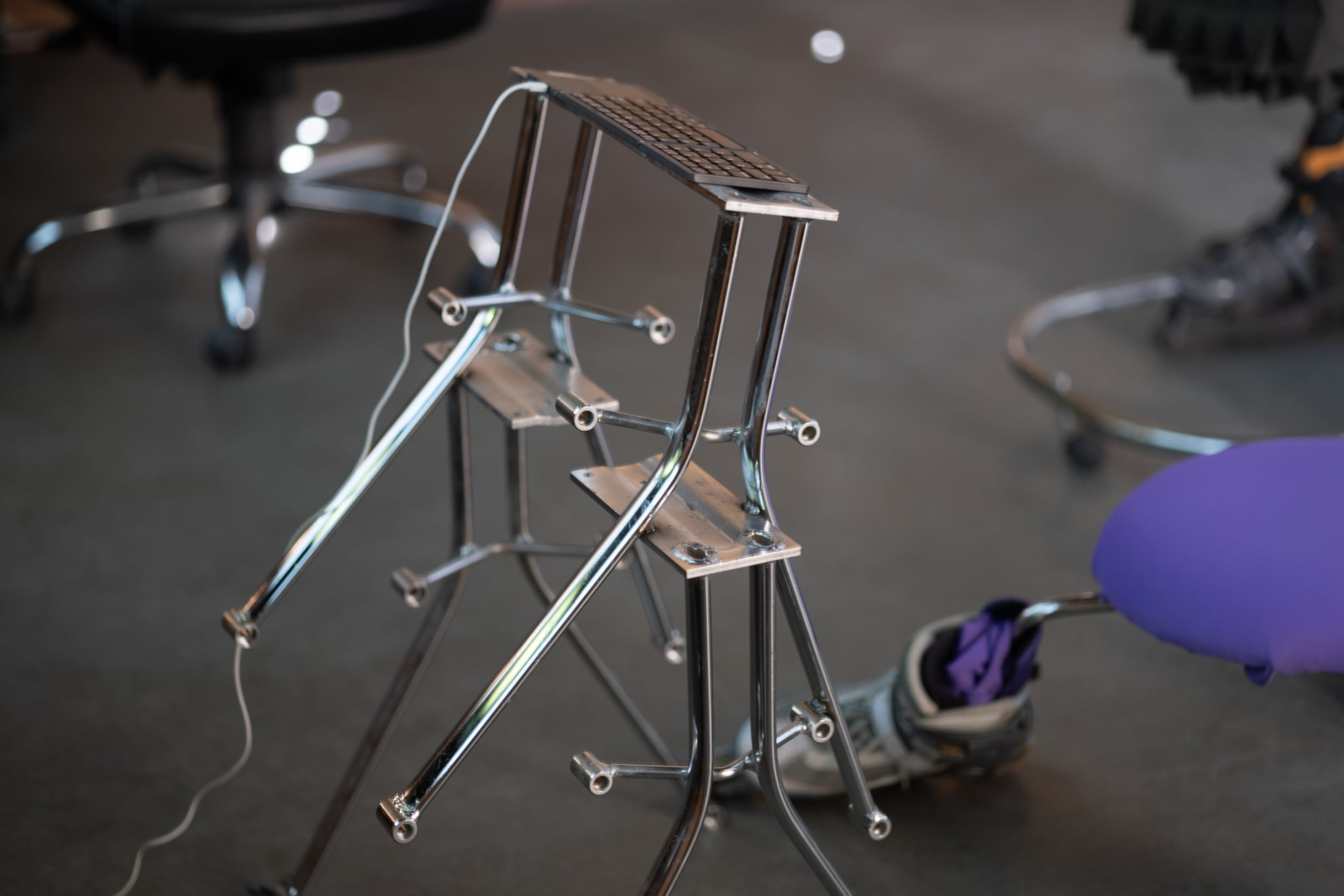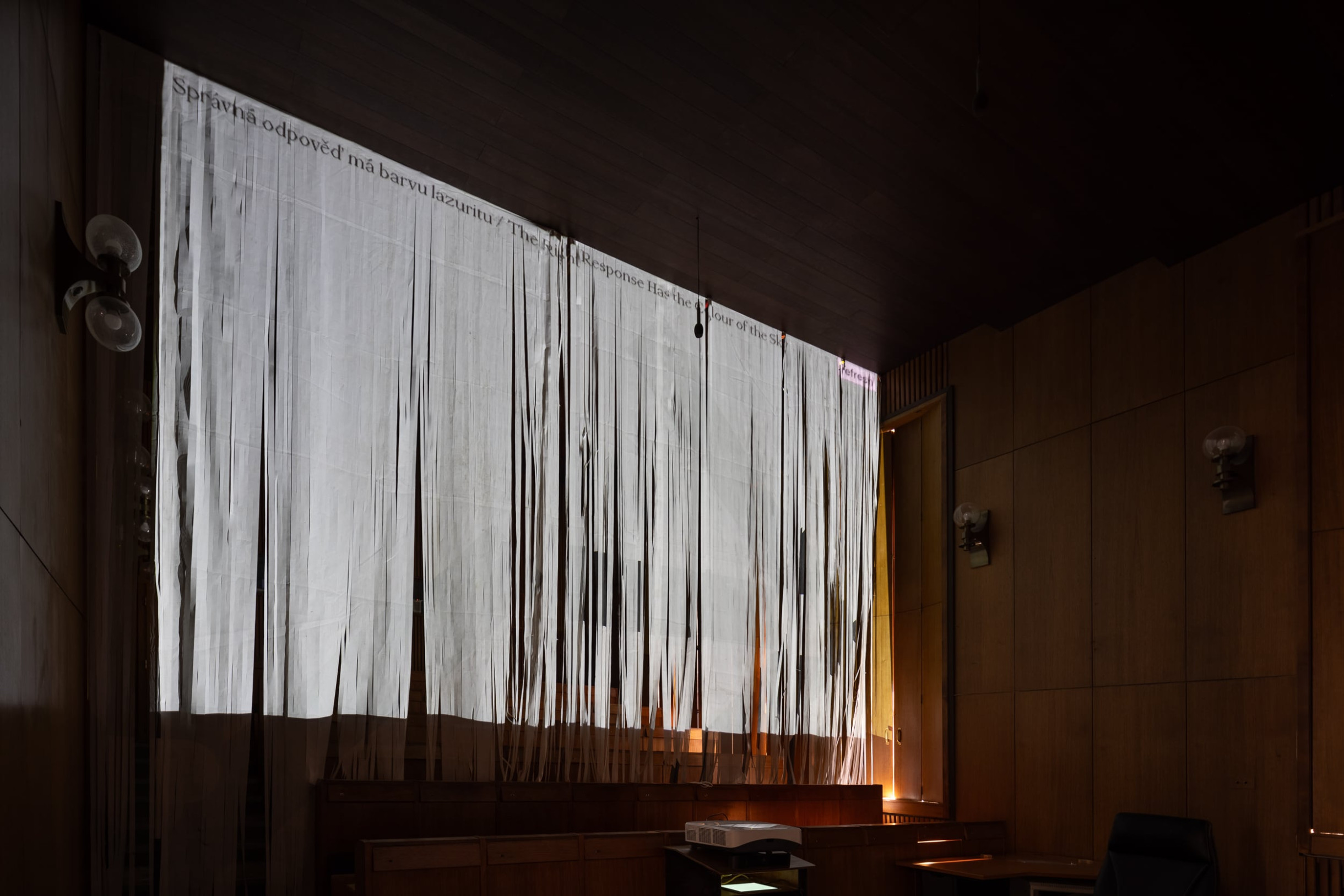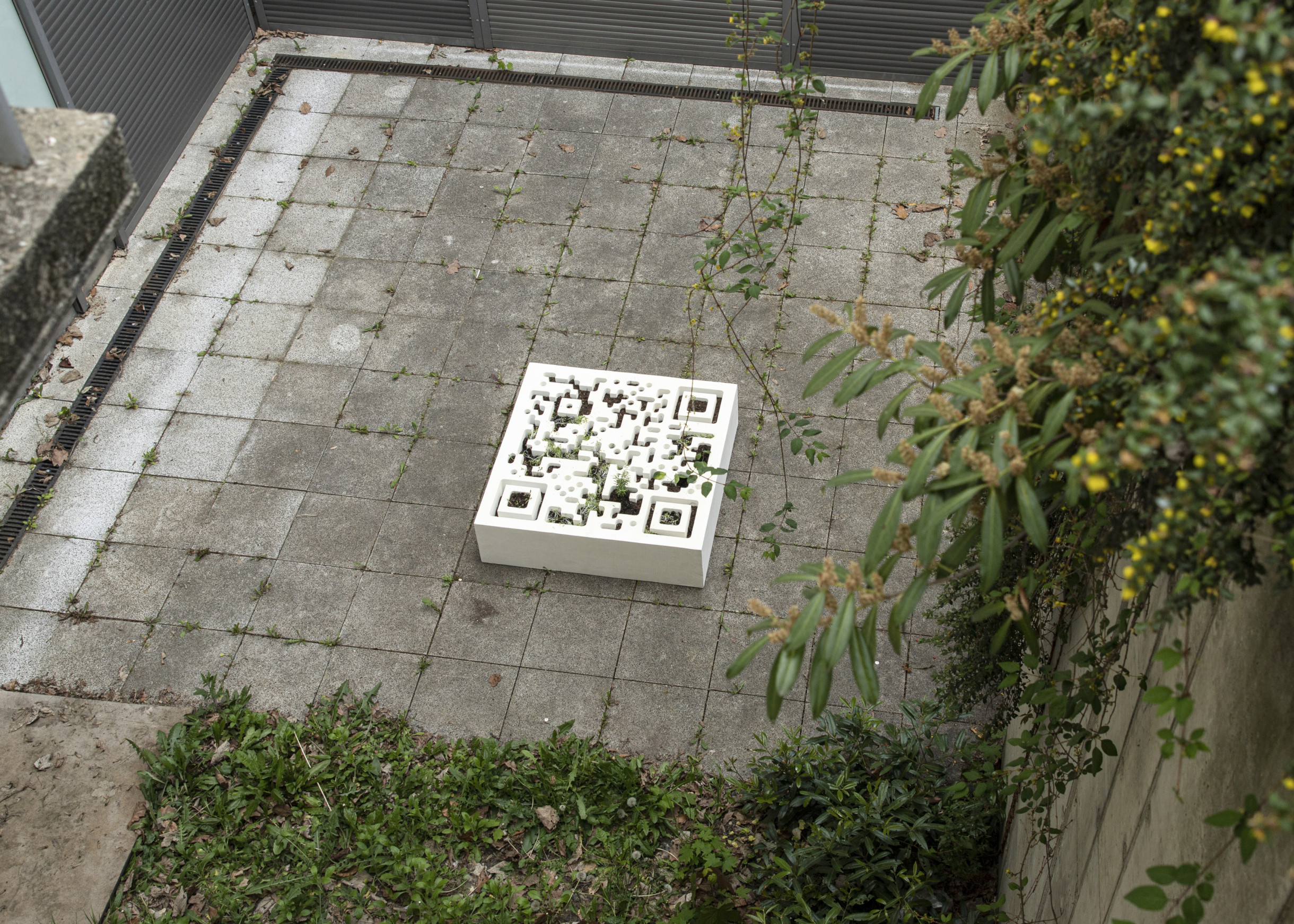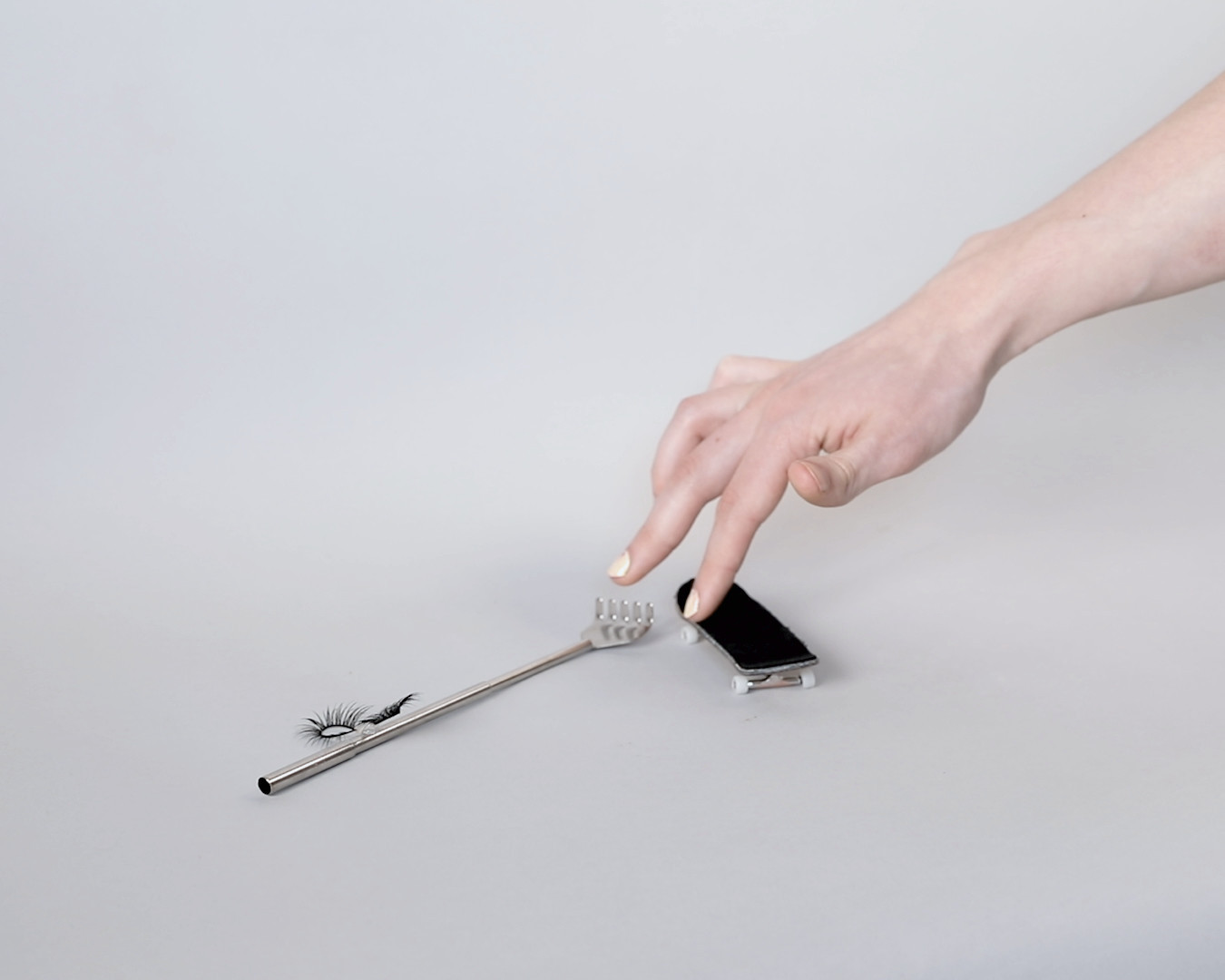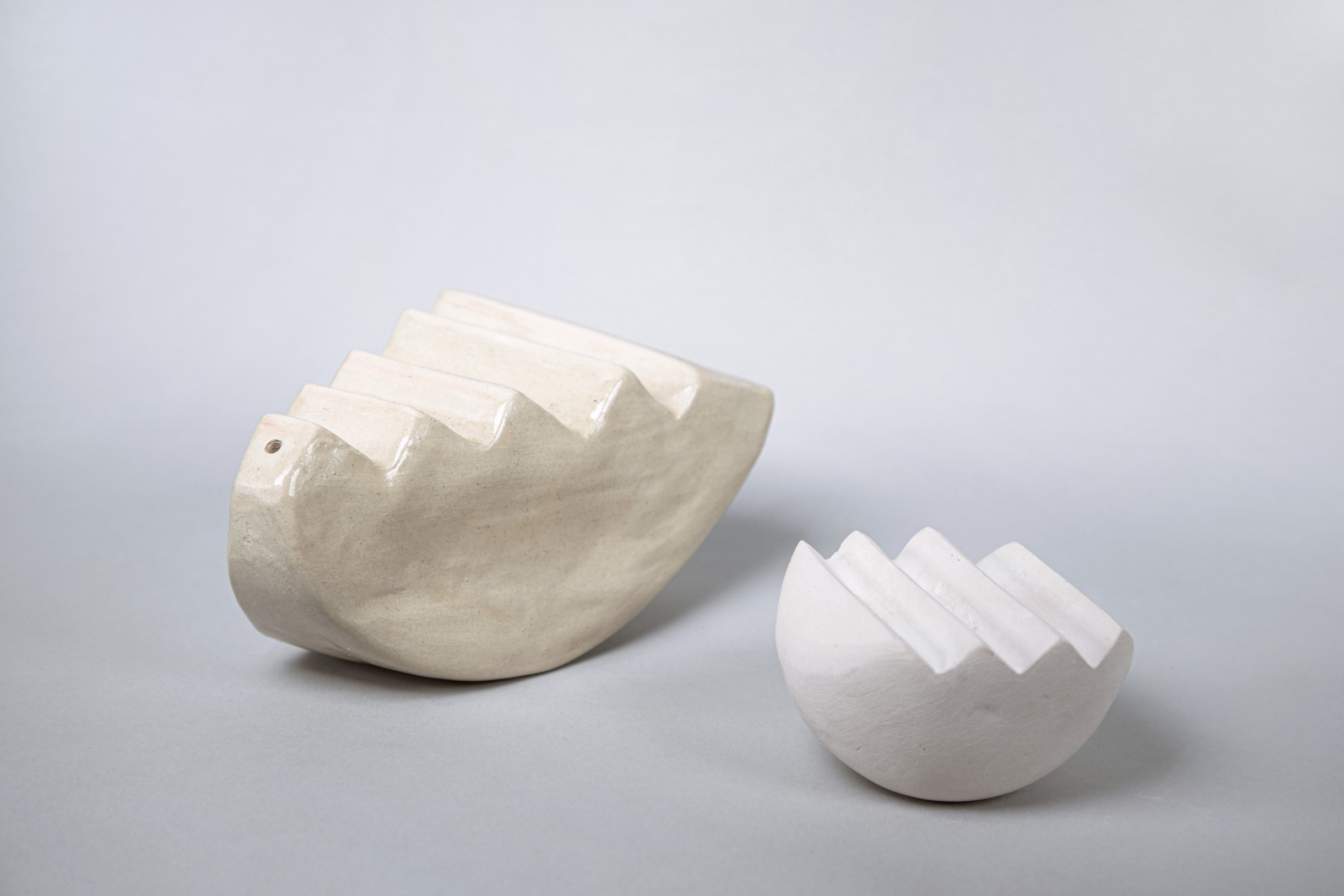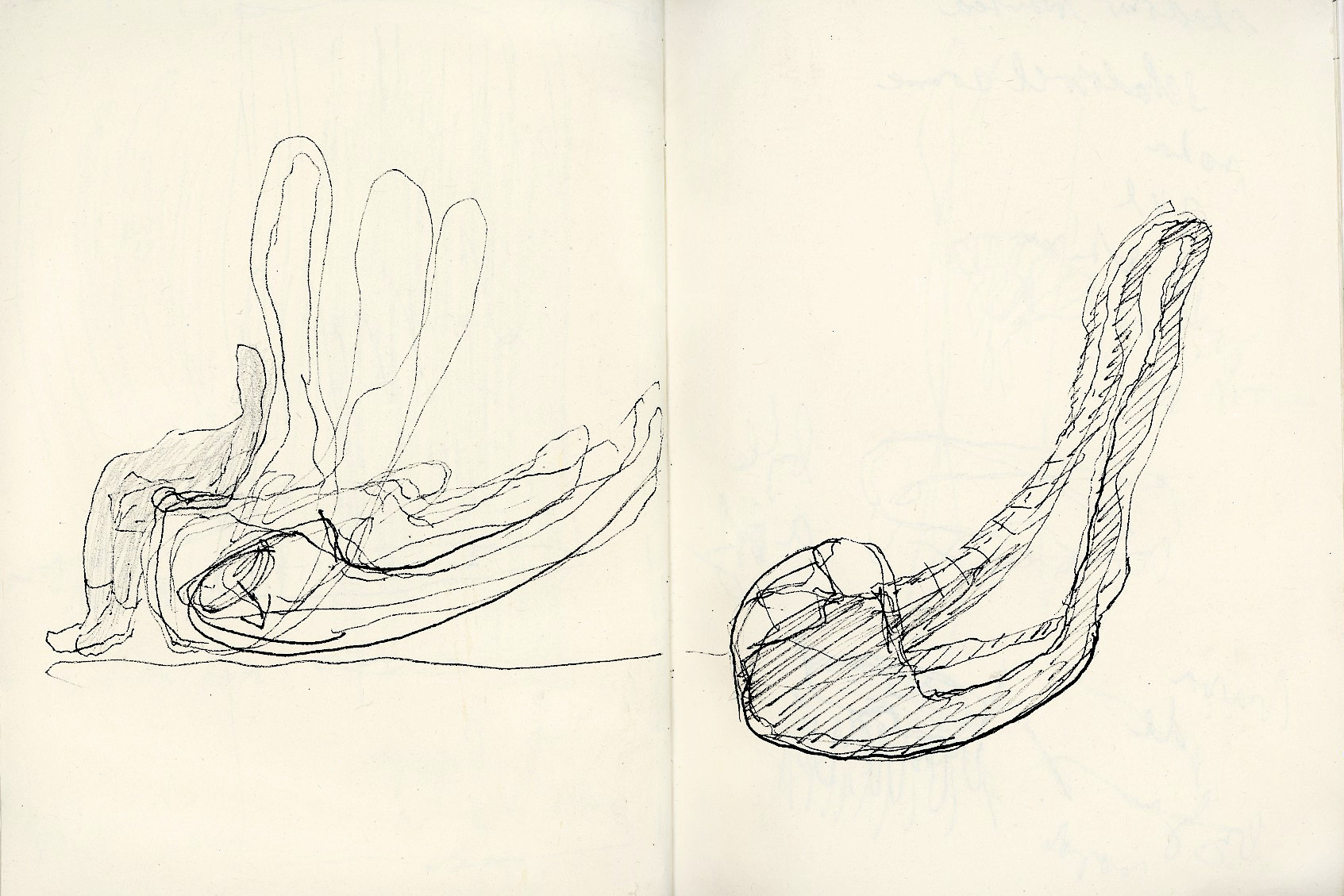Monika Kučerová↓
Galerie
Odkazy
Studium
| 2021–2024 | Intermédia 2, AVU (Pavla Sceranková, Dušan Zahoranský) |
| 2023 | Accademia di Belle Arti di Carrara, Italy |
| 2018–2021 | Socha 2, AVU (Tomáš Hlavina) |
| 2020 | exchange at AVU, Studio of Visiting Artist (Paulina Ołowska) |
Popis diplomové práce
5 Chances (to) Tame Fooling Mind
Monika Kučerová sees art less as the physical manifestation of a specific idea and more as weaving her processual approaches and improvisation into the structures of the material transformation that is constantly taking place around her. Whether she is melting glass waste, shaping water vortices, or experimenting with magnetism, Kučerová’s aim is not to design but to create a space for the mutual interaction of forces that contribute to both the form and content of the final outcome. A similar motivation can be found behind 5 Chances (to) Tame Fooling Mind. She uses five opportunities to tame “bad” thoughts in various places throughout the Academy relating toand learning differently than in the studio. The main thread running through her graduation work is the process of “learning” and the position of the one communicating, who has to “disappear” so that “the other” can relate to the subject. The mind in the title, of course, is not literally bad or foolish; it is the artist’s attempt at setting herself apart from intellectualism, at creating an opportunity to be a part of the world differently than just through the mind.
By creating five opportunities (coincidences), she asks whether it is possible to create a space where one can be in contact with what is „Real,“ a space that lies outside symbolic order and is thus impossible to describe in words. The various sculptural signs are something like an „interpretational riddle“ in which propositions and concepts are intertwined and messages can be interpreted as both an attack and a defense, as humor or seriousness. Instead of presenting her own findings, she shares her imperfect tools and speculative connections, which enable her to explore questions to which there are no (simple) answers. Therefore, although there exist certain ideas and concepts that passers-by might explore, the goal is not to convince anyone or to implicitly offer up meaning. Every installation is also an absurdly literal and incomplete sketch that does not necessarily expect a performative resolution/completion (proper interpretation). Instead, it hopes to be a dialectic node that we can approach from different ends and try to „untie“ ourselves on the basis of our personal experiences and values.

